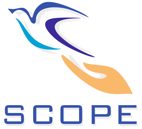About the Course
Academic research and development usually encompasses discovery, innovation, experimentation, and creation; however, in today’s highly competitive and global economy, it also involves patents, licensing, technology transfer, and partnerships with industry. Virtual instrumentation is the combination of user-defined software and modular hardware that implements custom systems (“virtual instruments”) with components for acquisition, processing/analysis and presentation.
National Instruments introduced the concept of virtual instrumentation more than 25 years ago and now offers an extensive platform of hardware and software for creating virtual instruments. Since its inception, the virtual instrumentation approach has gained widespread acceptance around the world. For instance, in 2004 National Instruments sold more than 6 million channels of virtual instrumentation in 90 countries.
This training will be an intensive 40 hours course that will involve the building, Simulating and Testing VI’s with National Instruments Labview Software. This Course will teach learners deep understanding of Graphical programming language and its capabilities to quickly prototype system from various domain thereby greatly reducing time to market.
Pre-requisites
Basic Understanding of any Programming Language Constructs
Industries where this course will be useful
In India, the main users of LabVIEW are
- Alliance partners of National Instruments like Captronic Systems ,Soliton, Apna etc.
- Govt. Research establishments.
- MNC Software service companies like HCL, Wipro, Infosys etc.
- Product companies (GE, Nokia,Moog etc)
Course Outcomes
- Ability to model Complex system
- Ability to use Graphical Programming Language
- Ability to Simulate and Test behavior of System
- Ability to use various Hardware interface with Graphical Programming Language
- Ability to improve Programming Skills
- Improving Capabilities to build Portable platform independent software
Course Layout
A) Labview Environment
B) Labview Data Types
C) Graphs and Charts
D) Debugging Tools
E) Loops
F) Structures
G) Arrays
H) Cluster
I) Introduction to SubVI’s
J) File I/o
